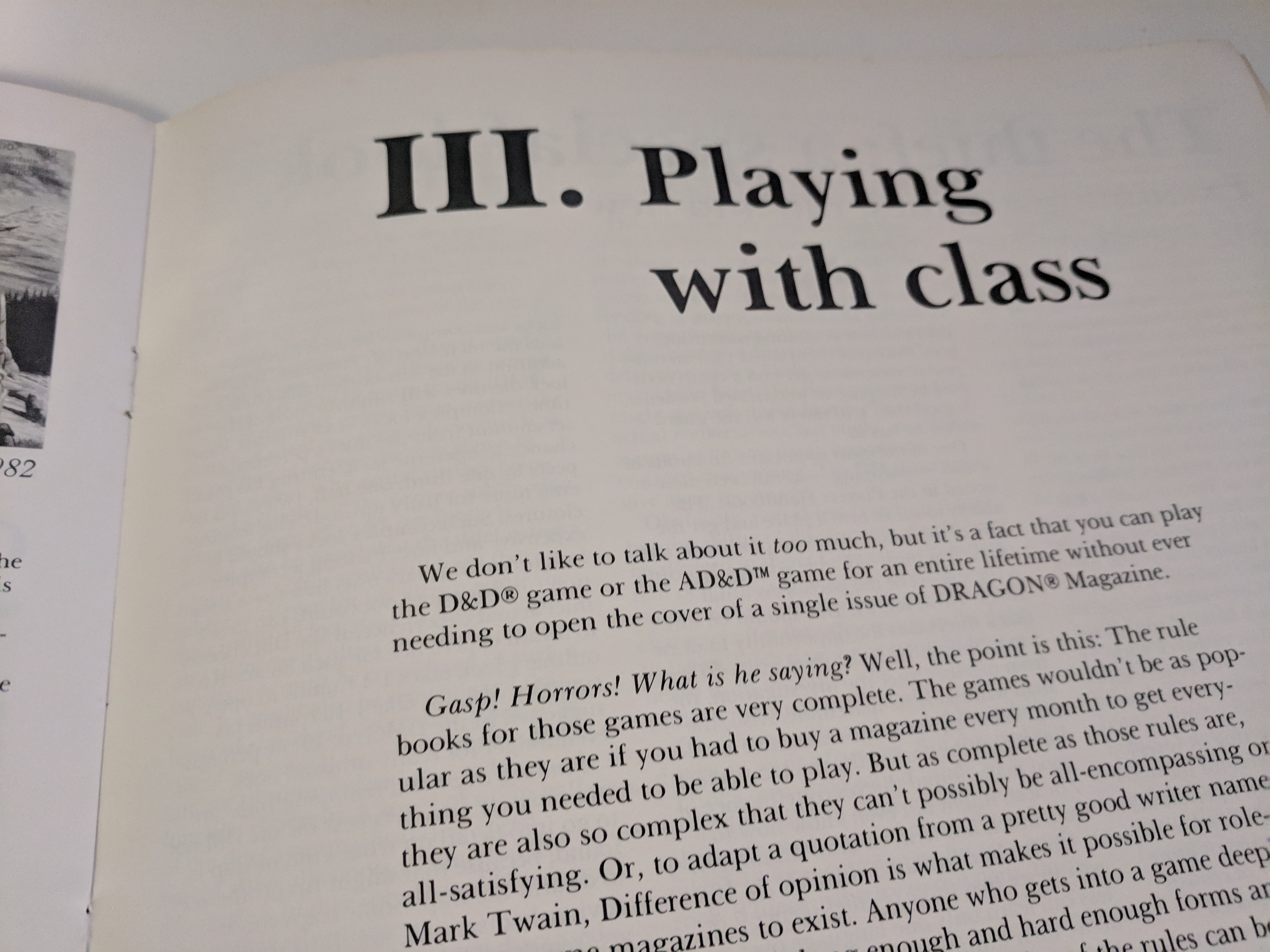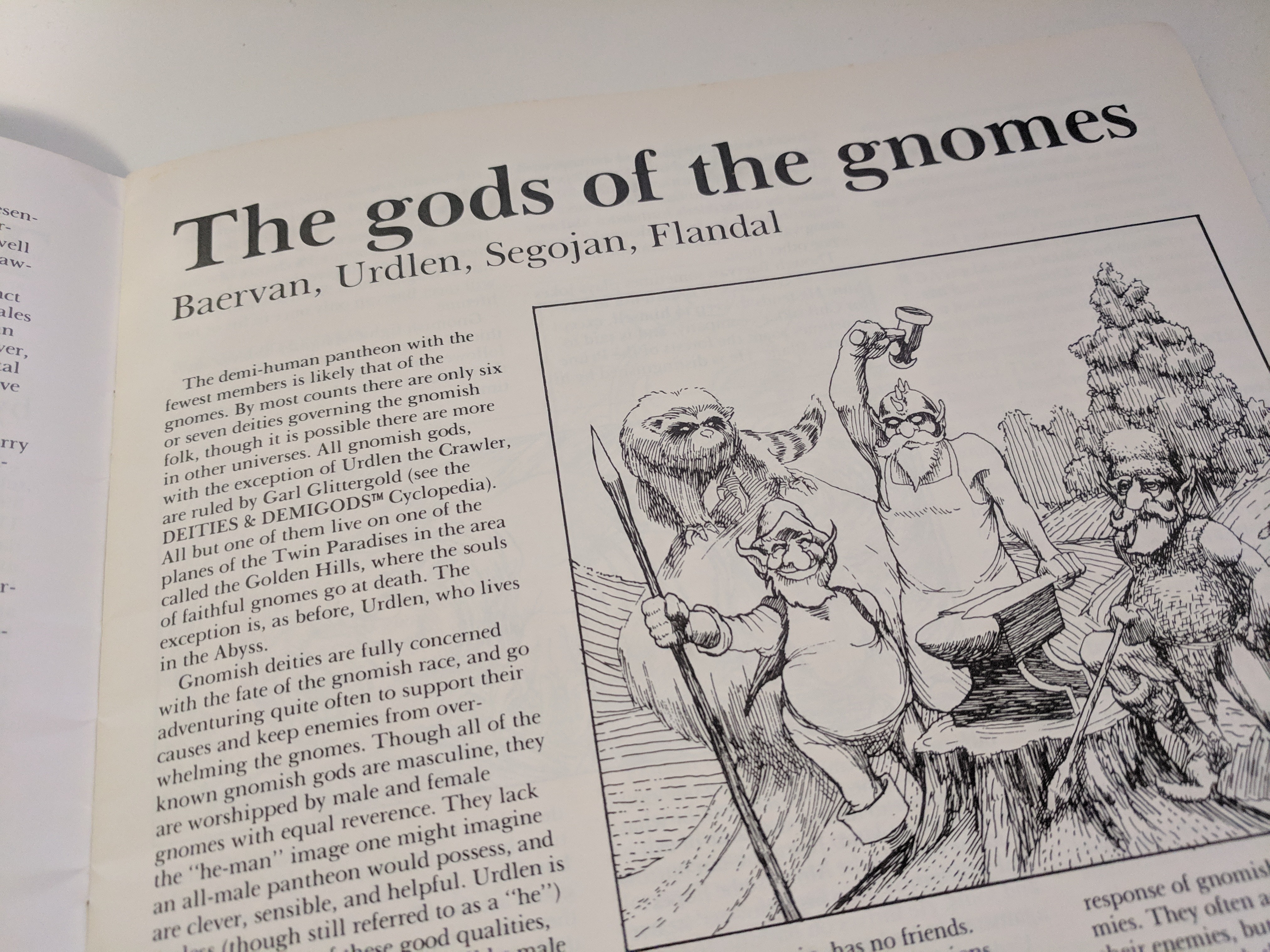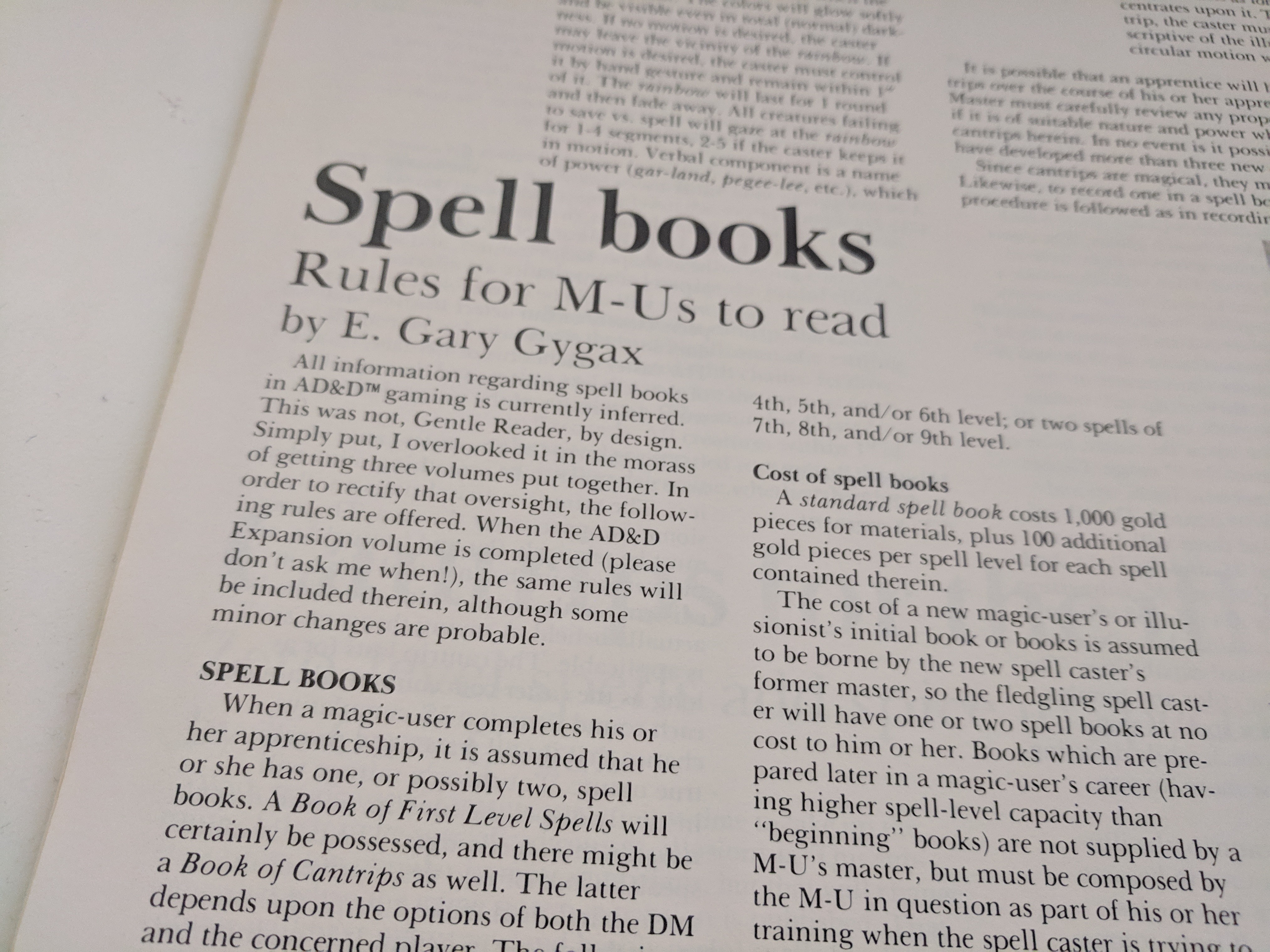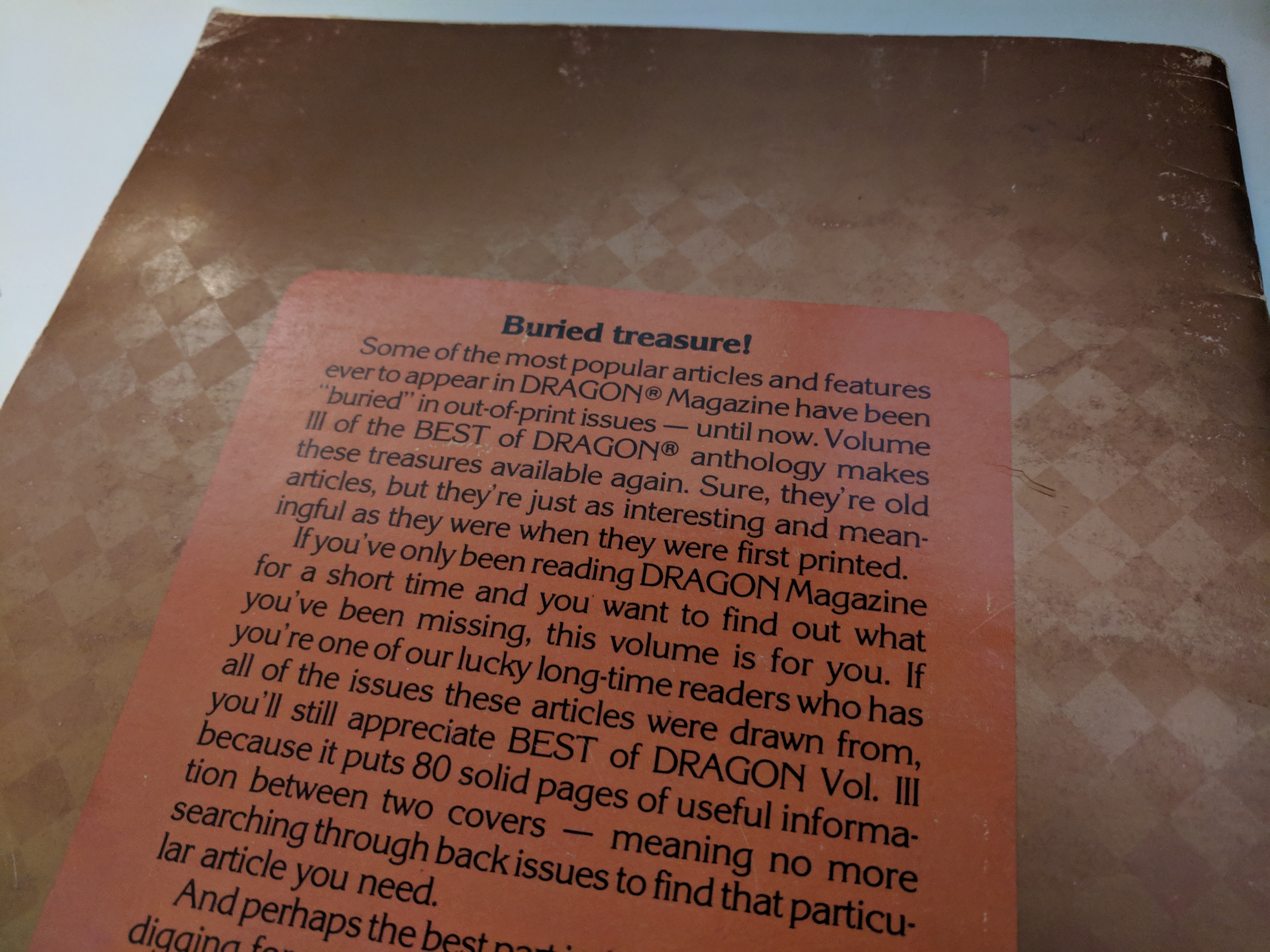Dragon enjoyed a readership like no other in magazine history. For thirty-one years, Dragon served as the herald of Dungeons and Dragons (D&D), whose players totaled between two million and six million in 2000. Upon its inception in 1975, Dragon was the first magazine to endow its readers with a voice that would shape the development of the nascent role-playing game (RPG) phenomenon. Only within the pages of Dragon could D&D’s players get definitive answers to questions like, “Can a wall of force stop a sphere of annihilation?” or “How does a sword of wounding affect a tarrasque?” (#250) from the mouth of the game’s R&D staff. “Dragon was a messageboard before there were messageboards,” writes Amber E. Scott, a freelance writer and contributor to the magazine, in an email interview, “It told gamers that others thought and felt like them, enjoyed the hobby they enjoyed, and saw the fun in imagination, reading, and killing monsters… It enabled a sense of community.” Passing into the care of three different publishers over the last three decades, the editors of Dragon saw 359 issues to print, five Dragon Annuals and eight compilations, along with 150 issues of Dungeon, its companion magazine. In September of 2007, however, the magazine shut down, transitioning to an online-only format.
“D&D has the strength of the D&D brand and player network behind it. No other role-playing game even comes close to the impact of either of those two things,” writes Dragon’s last editor-in-chief, Erik Mona, via email. Among role-players, the term is synonymous with the entire RPG genre. It is impossible to grasp the appeal of Dragon without understanding D&D, its origins, and its demographic. “Gamers face challenges many other hobbyists don’t,” Scott writes, “We are often ostracized — seen as nerds at best, demonic at worst. Gamers tend to be socially isolated… a condition still sometimes seen but mitigated greatly by the Internet.” TSR Hobbies, the original publisher of D&D, mistakenly believed its gaming audience to be twelve to fifteen-year-old boys who would be lost to the company as consumers the moment they turned sixteen. Wizards of the Coast (WotC), the gaming company that acquired D&D in the late nineties, released the “Adventure Game Industry Marketing Research Summary” in 2000, but what it revealed about the RPG industry’s consumers then is still illuminating. According to WotC’s summary, D&D entertains a largely adult audience: more than half the market is nineteen or older, and one-fifth is female. On the subject of Dragon‘s demographic, Scott adds, “I don’t think the readership is limited to those who actively play D&D; many former gamers, wanna-be gamers, and gamers from other systems read the mags… More women read now than in the past, but it’s still mostly men… Many more are middle-aged with families and kids.”
A Brief History of TSR
WotC recounted much of D&D’s history in 30 Years of Adventure: A Celebration of Dungeons and Dragons. D&D began when Dave Arneson met Gary Gygax at a gaming convention and produced “The Fantasy Game,” a modified miniature wargame that became First Edition D&D in 1974, when Gygax formed his company, Tactical Studies Rules. The game spread among members of Gygax’s International Federation of Wargamers, until copies reached colleges across the country. From 1975 to 1976, The Strategic Review was TSR’s official nesletter.

The way news of D&D spread in 1976 is like the way pass-along readership works in magazines today: by word of mouth. TSR succeeded as a company because it fostered a devoted fan base for its products: in 1976, TSR became the owner of GenCon, a massive convention that in 2006 had over 85,000 attendees. Also in 1976, The Strategic Review became The Dragon. The premier issue featured a goofy teal dragon on its cover and the melting reptilian letters that would serve as its title font for the next twenty-six issues. A “Conversation with Fafhd & the Mouser,” by renowned American fantasy author Fritz Leiber, was the main feature story. The issue’s thirty pages were printed in black and white, with incredibly small type and few drawings. Compared to the robust illustrations of issue #359, The Dragon #1 looks quaint, though in 2002, collectors priced it at $800. On the topic of these “early days,” recent editor Erik Mona writes that the game had a strong root in medieval history and a fondness for canonical fantasy authors. “You could get away with an eight-page article about the origin of shields and their use through the ages,” writes Mona, “because D&D predated computer games and there was not yet a cottage industry for D&D novel fiction.”
In the next years, the game took off. The Dragon had a staff of five, and D&D was grossing over one million dollars each year. Total paid circulation of the magazine leapt from 20,155 to 48,119. In the early eighties, a laughable Satanism scare fueled by fundamental Christians fouled D&D’s name in the media when fundamentalists accused D&D of being responsible for the disappearance of a college student. Though the incident’s connection to the RPG remains to this day unsubstantiated, detractors argued that the game’s inclusion of demons in its Monster Manual proved the game’s “occult ties.” Not surprisingly, the eighties were D&D’s heyday: Dragon‘s highest paid circulation, 118,021, was in 1984. By the late eighties, TSR Hobbies translated D&D into fourteen languages, founded the Roleplaying Gamers Association, and made legends of fantasy writers Tracy Hickman and Margaret Weis, who wrote the Dragonlance Sagaadventure modules and novels.
When TSR faced financial troubles in 1987, a Chicago businesswoman named Lorraine Williams bought control of the company. During the next decade, TSR would enter its most profitable era. At the same time, Dragon discovered D&D’s most iconic campaign setting, Forgotten Realms, through long-time fan and contributor, Ed Greenwood. Just as J.R.R. Tolkien breathed life into Middle Earth, Greenwood mapped out the fantasy continent Faerûn, set on an Earth-like, medieval world called Abeir-Toril. This setting first appeared in Dragon #30 and later was incorporated into the D&D Core Rules. But even in 1989, with TSR’s sales topping $40 million after the release of Advanced Dungeons and Dragons, the company’s downfall was right around the corner. Erik Mona writes that after TSR ousted “vocabularian” Gygax, the company’s material was written by “whatever English majors happened to live within twenty-five miles of the TSR headquarters at Lake Geneva and were willing to work for the company’s legendarily scrooge-like salaries.” He names Kim Mohan and Roger E. Moore as editors who were crucial to Dragon’s creative development. But because of an eventual lack of interest in the magazine on the part of Moore and later editors, “the whole franchise seemed to flounder. The air was rapidly escaping from the balloon, and Dragon started to suck. It got really bad in the early to mid-nineties… when TSR stopped publishing in 1996, Dragon stopped publishing too.”
Being in the office made me feel as if I were sucking up creativity through the air, by osmosis.
Amber E. Scott, former freelance writer for Dragon Magazine
TSR’s woes were due to several product marketing blunders and financial troubles with TSR’s distributor, Random House. Coupled with its inability to pay shippers, presses, and warehouses, as well as competition from rival companies such as Games Workshop and WotC, TSR shut down. Inevitably, Lorraine Williams sold TSR to Five Rings Publishing Group, a gaming company that arranged to be purchased by WotC, without Lorraine’s knowledge, at the same time Lorraine signed away TSR. Shortly thereafter, WotC’s visionary, Peter Adkison, involved himself in the redesign of D&D, Third Edition, which WotC released in 2000. Adkison intended to diversify TSR’s portfolio of games while at the same time making D&D’s rules more amenable to the video game industry. It was only a matter of time before WotC would become the veritable Microsoft of RPGs.
In 2000, three years after WotC became a subsidiary of Hasbro, WotC licensed the magazine to Lisa Stevens, CEO of newly formed Paizo Publishing. Dragon’s design was undoubtedly strongest under Paizo’s stewardship. Just over one-hundred pages, the monthly issue of Dragon cost $6.99. Yearly subscriptions were $39.99. Paizo created some of the most visually stunning issues in Dragon’s history; the polished art in these issues can be traced back to Peter Adkison’s decision to free D&D from the 80’s and introduce more “realism” into D&D’s art. Dragon hybridized the dynamism of America’s top comic book publishers with the sleeker, more abstracted style found in Japanese animation. The consistency of this style helped WotC solidify the D&D brand, which Dragon exemplified. Amber E. Scott, Dragon’s freelancer, enjoyed many “happy hours” gaming at Paizo. “Inside the office it was like Willy Wonka’s factory taken over by Cthulhu. The ‘guys’ are endlessly creative, endlessly energetic, and endlessly, gleefully, twisted… They love their jobs: their cubicles are plastered with old magazine covers and timelines, plushies and action figures and statues cover all available surfaces, and the meeting room with its big office table and whiteboard holds boxes and boxes of Dwarven Forge modular terrain for impromptu dungeon-building. Being in the office made me feel as if I were sucking up creativity through the air, by osmosis.”

Artist Larry Elmore’s cover illustration in the last issue, #359, features an emerald dragon crouched atop a serene hillside. In the foreground, a busty, bronze-skinned Amazoness wearing feathered piecemeal armor wields a golden bow, its color amplified by the bright yellow of Dragon’s fat title font. No headlines obstruct this issue’s illustration, and their absence hearkens back to the clean covers of the late nineties.
Inside Dragon Magazine
After 1998, the top strip of each cover proudly announced what each issue was going to be about, and #359 was no exception. Dragon #359 featured the return of twenty of D&D’s oldest super villains, magical relics unearthed from Castle Greyhawk, and the “Ecology of the Tarrasque” — D&D’s deadliest monster.
Ever since Dragon launched as a custom newsletter for TSR Hobbies, it operated as a house organ for its licensers. The rate for a single, full-page color ad in 2007 was $2400; at the time, the magazine was guaranteeing 50,000 worldwide distribution — a CPM of $48. Under Paizo, every article that appeared in Dragon was approved by WotC before the magazine went to print. Before the twenty-first century, almost all of Dragon’s advertisements hawked D&D products, and this remained at least half-true in the end.
In its final incarnation, Dragon was organized into three main categories: news articles and reviews, departments, and features. The front matter always included a letter from the editor (“The Wyrm’s Turn”) and mail from subscribers (“Scale Mail”). Review articles like “First Watch” and the one-fourth page advertorial “Dragon Talk” previewed tabletop games, toys, websites, video games and other gaming products. Dragon‘s prominent video game coverage in this section starkly contrasts with the clumsy approach the magazine took in the late eighties and early nineties: awkward titles like “The Eye of the Monitor” and “The Role of Computers” evince that these technologies were unfamiliar territory for the magazine in those days. Black and white background boxes with orange or red headlines cleanly demarcated each of the non-feature columns. In this way, departments and news articles were easily distinguishable from features. Under TSR Periodicals, the reviews section also covered upcoming conventions, RPGA or industry news, and book reviews.
Only two aspects of Dragon remained consistent through the years: its comic section, which bookended the magazine, and its longest-running department, “Sage Advice,” which allowed the game’s publishers to resolve readers’ most pressing rules-related questions. The last of nearly two dozen comics Dragonacquired since the inclusion of its “Dragonmirth” department was Order of the Stick, a popular web-comic. Notably, the reprinting of the comic Knights of the Dinner Table got Dragoninto the legal trouble associated with TSR’s Dragon Magazine Archive, a CD-ROM that contained the magazine’s first 250 issues in .pdf format.
Few departments survived major revisions to the Core Rules, as the content of Dragon’s articles reflect the rules set of the most current edition. Supplements in #100, for example, are incompatible with supplements from #320, because they each support different editions of the game. Even so, columns like “Spellcraft,” “Heroic Feats,” “Bazaar of the Bizarre,” “Class Acts,” “Gaining Prestige,” and “Winning Races” expanded the content of WotC’s compendiums by providing players with additional spells, magic items, rules, and races for use in their campaigns.

Dragon’s feature well was the meat of the magazine, however. In the December 2006 issue, a patchwork green background filled the pages of “Legacy of the Ancient Empires.” The same issue’s “Savage Tides” feature — an adventure supplement — resembled the parchment of old treasure maps. Any advertisements that appeared in the feature well were squished into a quarter-width rectangle running along the edge of the page.
The content of the features varied considerably. Creating supplemental material for an RPG involves making compatible with dice rolls everything a role-player might want to introduce into her campaign. The “Dragon Magazine Writers’ Guidelines” advised readers to submit one of four types of articles to the magazine: advice articles, general interest essays, fantasy detail supplements, and expansions to the rules. Freelancers received five cents a word for their manuscripts, and authors were required to sign over all rights to the magazine upon their article’s acquisition (which they did, eagerly). Advice articles, also called “metagaming” or RPG “etiquette” by players, focused on improving play by enhancing interaction between the DM and her players. Examples included “Managing player knowledge versus character knowledge” (#305) and “He’s Got Personality; a paladin’s Charisma works differently from that of a bard or enchanter, and here’s how” (#243). General interest essays were meant to appeal to the average role-player by making applicable to the D&D campaign topics from the real world: “Campaign Components: Knights, everything you need to bring honor and chivalry to your game” (#299) detailed the chivalric codes of medieval knights while “Crystal Confusion: Everything — and we mean everything — you’ll ever need to know about gems” (#248) gave the succinct gemology lesson every adventuring thief needs. The more specific rules features focused on introducing optional dice mechanics to handle situations undocumented by the Core Rules. “Ramming Speed: Complete vehicle combat rules” (#294) and “Eye of Newt and Toe of Frog, Using Power Components for spells and magic items” (#317) are keen examples of D&D’s endless quest to reduce reality to polyhedrons. Finally, the most common type of article in the feature well was the fantasy detail supplement, which expanded D&D’s fantasy lore. The “Ecology Of” and “Demonicon” series are famous for introducing a plethora of monsters and demons into Dragon‘s pages over the years.
Dragon’s Final Years
In September 2007, the venerable Dragon met its demise. Scott Rouse, Senior Brand Manager for D&D, wrote in a press release: “Today the internet is where people go to get this kind of information… By moving to an online model we are using a delivery system that broadens our reach to fans around the world.” Much to the horror of Dragon’s readers, this announcement, followed by Lisa Steven’s confirmation on Paizo’s website, revealed that WotC did not renew Paizo’s license to produce the Dragon and Dungeon magazines. When asked about Rouse’s comments, recent editor Erik Mona wrote “the audience was outraged and remain quite hostile to Wizards for making this decision. The magazines were still viable.” In 2006, the magazine’s total paid circulation was 41,220.
To some, the death of Dragon magazine did not come as a surprise. “D&D was dead when Third Edition came out,” says Christina Sills, owner of Wildgate Games in Deltona, Florida, over the phone, “so when Dragon was done, it just proved what we already knew.” The divide between gamers who remained loyal to their editions of the game throughout the years only widened with the release of Third Edition. Many “old-school” gamers, who enjoyed the golden years of Second Edition, saw the direction Adkison took with the D&D brand as overtly commercial. Adkison, who turned Magic the Gathering into the world’s bestselling collectible card game and transformed WotC into a multimillion-dollar company, also personally oversaw the revision of Second Edition after the company acquired D&D. His intention to make D&D more amenable to video games and overhaul the rules to “reduce complexity” succeeded in broadening the game’s audience and rejuvenating Dragon‘s dwindling circulation at the turn of the century, but also alienated a generation of players.

At GenCon 2007, WotC previewed a primitive 3-D chat-room called “D&D Game Table” as part of D&D Insider, the new subscription feature of WotC’s website that will allow players to play D&D online. Little did players know, however, that Dragon too would be going the way of online chat-rooms. “The electronic ‘magazines’ may be modern and efficient and the way of the future,” remarks freelancer Scott, “but I will never peer at my byline on a computer screen and feel like King Kong on cocaine.” Online messageboards bemoaned WotC’s decision, and hobbyists everywhere mourned the conclusion of Dragon‘s print run. “We can’t get this kind of stuff for our games anywhere else,” says Sills, “It’s really sad.” On October 1, 2007, Dragon #360 was released in digital format within the confines of D&D Insider. No one really knows the reasons behind WotC’s decision to slay the Dragon and bury the Dungeon; the details may remain unclear for many years to come. One thing is certain, however: Dragon magazine represented the best the RPG industry had to offer, and will remain a legend among role-players until the last die is cast.




Comments on The Last Die is Cast: On the Death of Dragon Magazine
Del
I’ve been reading a lot of the magazine lately for a project, including the interior PDF-only version, and the more recent ( and recent cancelled) Dragon+ app version.
It’s kind of amazing how pushy and sometimes hostile Gygax was in his columns. The magazine could definitely have used a professional manager much earlier than it had one. The PDF era, however, was very sterile-feeling, since there was no sense that the community was actually communicating, though the art improved.
Dragon+ wasn’t without merit; it was better than I expected it to be. I think WotC is going to regret not having a soapbox for new or distant players who aren’t (or aren’t interested in getting) behind it’s digital paywall.
Daniel Quinn
Did you ever get your hands on the ancient CD collection? Way back when, I had bought it off Ebay for $300+ just so I could have my copy (which I then returned to the Ebay ether on resale for the same price…). I started playing well after Dragon was on its way out–issues had begin transitioning over to 3rd edition, but I do wish the RPG landscape had a definitive print magazine for its time. The closest thing I can think of in the OSR space is The Glatisant (the Questing Beast newsletter).